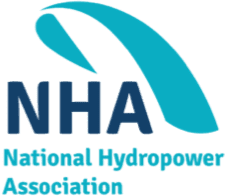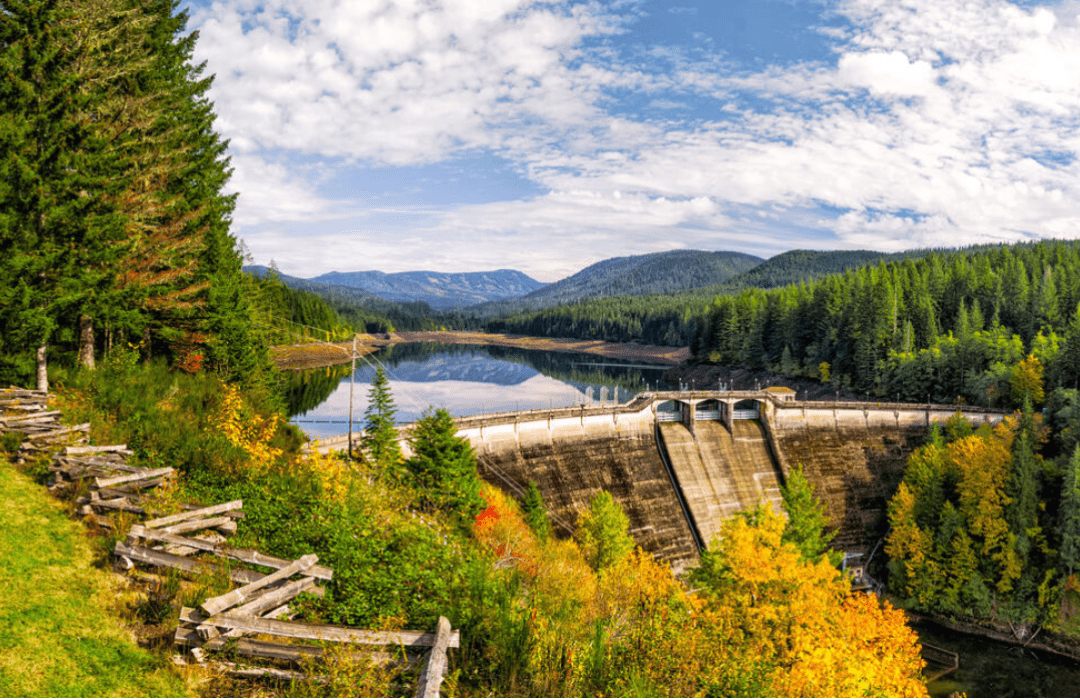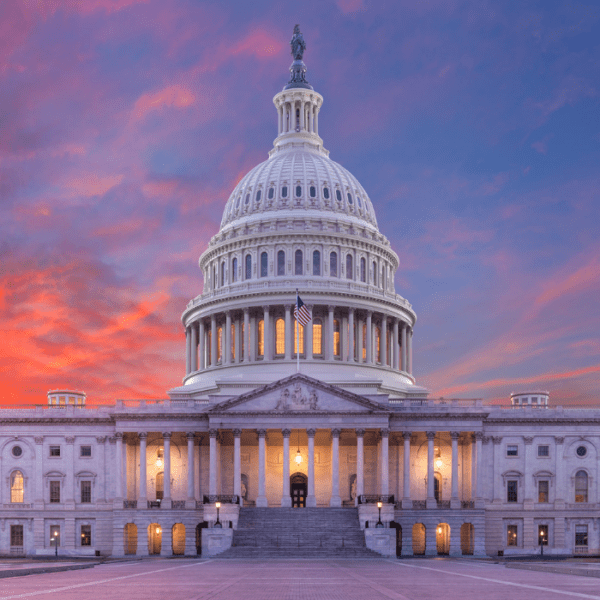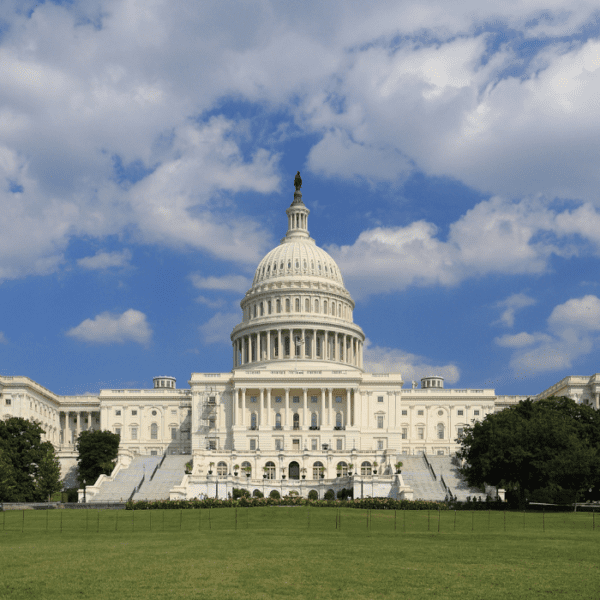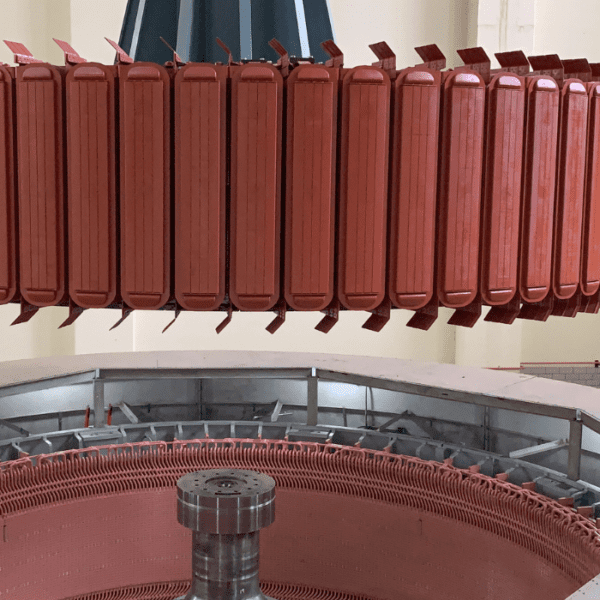With December nearly over, National Hydropower Association (NHA) wanted to use the last POWERHOUSE of 2023 to reflect on the year’s many successes, highlights, and milestones.
In addition, the stage has been set for significant legislative progress affecting water power as we close out the year and move into 2024.
Use the links below to learn more about NHA’s 2023 highlights and plans for 2024:
- NHA Celebrates 40 Years of Hydropower History
- A Momentous Hydropower Day
- Spreading Awareness About the Importance of Water Power
- Growing the Team
- Policy Wrap-Up
NHA CELEBRATES 40 YEARS OF HYDROPOWER HISTORY
2023 marked NHA’s 40th anniversary! Founded in 1983, the National Hydropower Association began as a small organization and now represents more than 325 member organizations, which own and operate 85% of the waterpower generating capacity in the U.S.
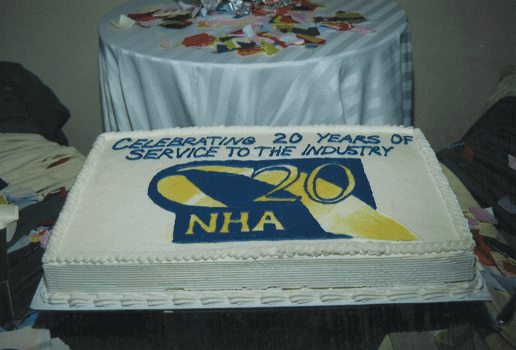
Our cake from 20 years ago!
At the time of NHA’s founding in 1983, the conventional capacity of U.S. hydropower was 68.93 GW. Since then, the total generating capacity of hydropower grew to 80.58 GW, a 16.9% increase that now encompasses 2,252 hydropower plants producing 28.7% of the United States’ renewable energy and 6.2% of all electricity in 2022.
While NHA has grown over the years, the Association’s mission of championing waterpower as America’s premier carbon-free renewable energy source has remained the same. Part of advocating for hydropower involves celebrating its history, a reoccurring theme throughout 2023, as seen in the dedicated “Hydro Heritage” booth at Clean Currents 2023 in Cincinnati, Ohio.
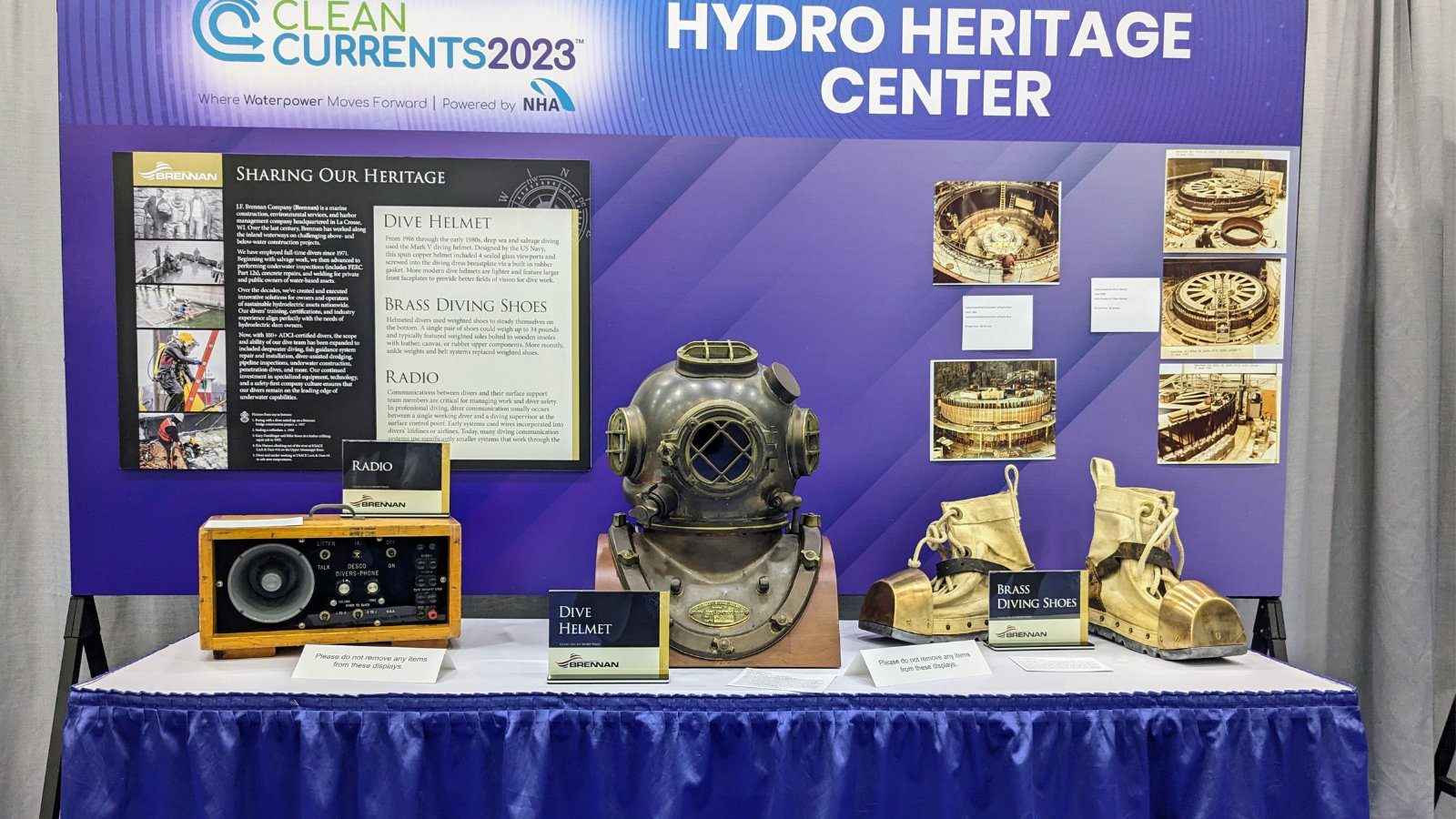
The Hydro Heritage Center featured artifacts, photos, and stories from hydro’s past. Additionally, Bob Underwood, a lifelong engineer and renewable energy advocate, was available at the Hydro Heritage Center, where he discussed his book: Dam It! Electrifying America and Taming Her Waterways – an exploration of America’s hydropower history inspired by the life and stories of Underwood’s grandfather, a renowned dam builder.
A MOMENTOUS HYDROPOWER DAY
Every August 24, the U.S. hydropower industry celebrates National Hydropower Day – an opportunity to recognize the 135 years hydropower has fueled the United States with clean, renewable energy. National Hydropower Day was created by NHA to collectively appreciate hydro’s contributions to bolstering the nation’s clean energy infrastructure, as well as providing grid resiliency and reliability.
Building off the success of 2022’s theme, NHA created the “Hydropower is Key” theme for 2023 to increase hydropower’s public profile. While hydropower remains the nation’s second largest renewable, the public is often unaware of hydro’s value as a climate solution, the role it plays in strengthening the health of our rivers, and its ability to integrate other renewables onto the grid.
NHA prepared three topline messages to illustrate hydropower’s critical role in our renewable future; the messaging points were as follows:
- Hydropower is key to cleaner communities
- Hydropower is key to local job creation
- Hydropower is key to a dependable energy future
Utilizing these topline messages, graphical assets created by NHA, and easy-to-use social media toolkits, the hydro industry embraced #HydroDay.
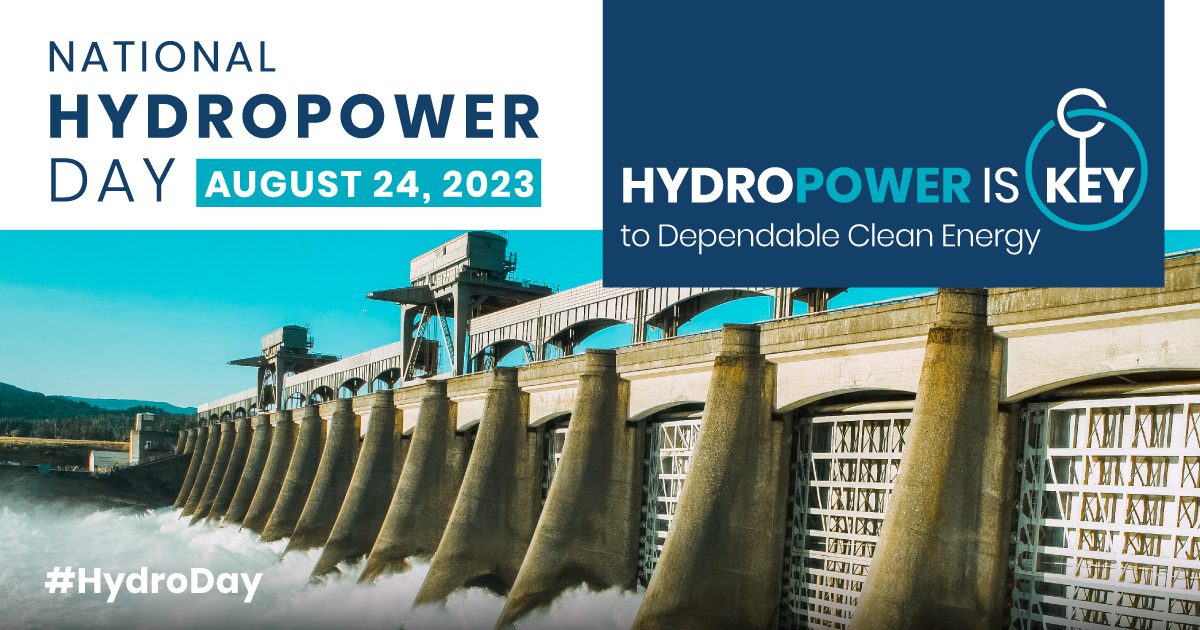
When National Hydropower Day concluded, the team at NHA pored over the data and were excited by the results:
- 382 Editorial Mentions
- 8 Broadcast News Mentions
- 19 Twitter Posts from Federal and State Government Officials – including two hydropower facility tours by Members of Congress
- 396 Article Shares on Social Media
While the NHA team prepares for National Hydropower Day 2024, supporters can build excitement by keeping an eye on NHA’s social media platforms, inviting legislators to tour facilities, and continuing to share the importance of your water power work on social media.
SPREADING AWARENESS ABOUT THE IMPORTANCE OF WATER POWER
NHA worked across different fronts (social media, digital & print ad campaigns, and events) to advocate, connect, and inform, strengthening the Association’s mission while sharing the water power industry’s story with a broader audience.
Social Media Growth
On social media, NHA maintained a drumbeat of content over the course of 2023 by creating frequent and engaging posts targeted at both the industry and beyond. Part of this effort involved leveraging relevant messaging opportunities and engaging with key stakeholders – elected officials, government agencies, NHA member companies, and many others. The strategy resulted in strong follower growth across all platforms; for example, NHA’s Instagram following grew by over 50% in the past year while the Association’s LinkedIn following grew by almost 40%.
“Clean Living” Ad Campaign
One of NHA’s 2023 goals was to reach new audiences while crafting strong narratives about water power’s importance via a major digital ad campaign. While hydropower’s importance to powering communities isn’t revelatory to those in the industry, including hydro’s necessary role in the clean energy transition, others aren’t getting the message. This was the impetus behind NHA’s “Clean Living” digital ad campaign, which sought change the mindset about water power by targeting over one million millennials across ten states. Millennials were targeted because they represent a growing influence in business and policy, and NHA wanted to ensure that these Americans understand the role water power plays in both day-to-day life and the broader energy transition.

The ad campaign appeared in the form of a digital ad, which appeared on streaming platforms and across social media. The video reached a cumulative audience of around five million with strong frequency, which means that many who viewed the ad saw it many times over the course of the six-week campaign.
Polling conducted concurrently with the ad campaign demonstrated the strong favorability of water power, hovering around 80% in the three target regions of the Northeast, Southeast, and Midwest. Due to water power’s high favorability in these areas, NHA has more work ahead if aiming to further elevate the messaging and reach a greater audience.
In 2024, NHA will build on the “Clean Living” ad campaign’s momentum by launching a new digital ad campaign, seeking to reach groups wielding strong influence in the energy , climate, and policy arenas. With so many energy-related stories being told in a constantly evolving digital landscape, elevating water power’s narrative takes time, but 2023’s “Clean Living” campaign demonstrates the progress NHA has made in a time where the effort is more important than ever before.
NHA’s 2023 Regional and National Events
An important part of NHA’s yearly calendar are the water power events held across the United States at both the regional and national-level. In 2023, NHA held four regional meetings, which took place in Massachusetts, Alaska, California, and Wisconsin. Designed to feature curated, regionally specific programming, the regional events brought in a strong number of attendees and featured expert speakers. The 2024 schedule for NHA’s Regional Meeting series is available here.
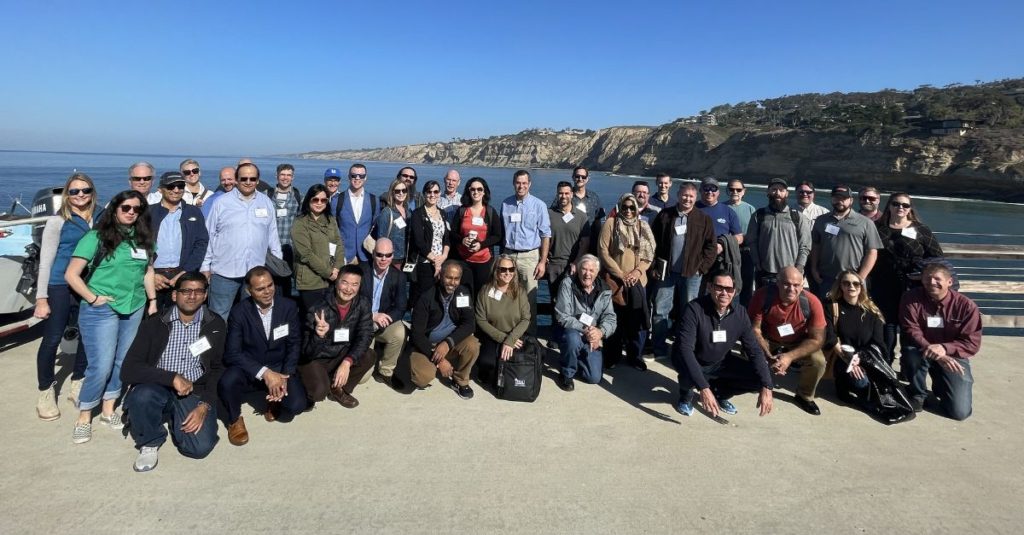
Group photo from December’s California Regional Meeting; the photo was taken during a tour of Scripps Institution of Oceanography in San Diego.
This past May, the water power industry convened in Washington D.C. for Waterpower Week – NHA’s national policy conference. The event, which also serves as an important advocacy opportunity for water power, played host to the finale of the 2023 Hydropower and Marine Energy Collegiate competitions, which tasked 150 students from 31 U.S. colleges and universities to find solutions to modern, clean energy challenges while connecting them to potential job opportunities in the water power industry. In addition, Waterpower Week’s strong advocacy focus helped push forward several bipartisan pieces of legislation moving ahead in both houses of Congress. Learn more about Waterpower Week’s big takeaways here.

David Turk, U.S. Deputy Secretary of Energy, in conversation with Malcolm Woolf, CEO and President of NHA, during Waterpower Week’s Monday plenary session
In October, NHA hosted a successful Clean Currents conference + trade show in Cincinnati, Ohio. The event has quickly become the premiere gathering for the water power industry. This year, Clean Currents drew nearly 1,600 attendees and over 200 service and product suppliers for an amazing week of collaboration, learning, and fun. The budding momentum around Clean Currents speaks to the strength of the event and the industry. Learn more about the biggest takeaways from Clean Currents 2023, and check out the event page for Clean Currents 2024 in Portland, Oregon, from October 7 – 10.
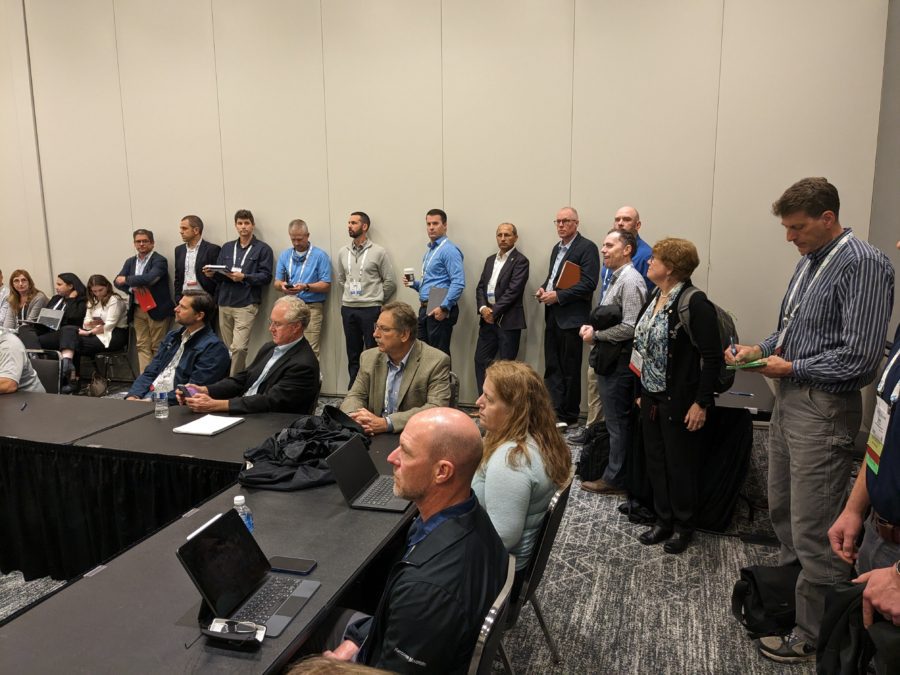
Standing room only at the Pumped Storage Hydropower forum at Clean Currents.
GROWING THE TEAM
To help meet the needs of the water power industry, NHA invested in staffing over the course of 2023, adding seven new employees and growing the team to 17 total members – a record size for the Association.
With these extra hands, NHA has been able to respond more quickly to pressing matters impacting the industry, strengthen external communication channels, forge new relationships with partners and political representatives, and run large, successful events.
Read on to learn more about the newest additions to NHA’s team:
Barbara Bauman Tyran – Director, External Relations – Barbara joined the NHA team bringing outstanding federal / state government relations experience, following two decades as Director, Washington and State Relations, in EPRI’s D.C. office. Her background includes federal advocacy for utilities and management consulting for public, private, and non-profit sector clients.
Copeland Tucker – Director of Public Affairs – Copeland was hired to help promote NHA’s work throughout the media, informing and inspiring new audiences about the hydropower industry. He brings many years of experience in communications and public affairs, serving on Capitol Hill for clean energy champions, as well as in the public relations world.
Connor Nelson – Regulatory and Market Affairs Specialist – Connor recently graduated from George Mason University, where he completed a Masters in Public Administration with an emphasis in Climate and Energy Policy. During his studies, Connor worked as an intern in the House of Representatives, as well as the U.S. Department of Transportation, helping implement the Department’s sustainability plan.
Ellie Rubalow – Events Specialist – Ellie assists with all NHA meetings and events, and her focus is on NHA’s Regional Meeting series. Prior to starting at NHA, Ellie graduated from the University of Alabama, where she earned a degree in Hospitality Management.
Sydney Rovner – Program Assistant – Sydney is NHA’s newest program assistant, working closely with the Policy and Legislative Affairs teams. Prior to joining NHA, Sydney completed a Policy and Advocacy fellowship with Foreign Policy for America and the Delegation of the European Union to the United States, where she worked on various climate policy initiatives.
Chris Hayes – Senior Advisor of Technical Programs and Training – Prior to joining NHA, Chris was the Vice President of Utility Accounts Management at CEATI International. As a hydropower professional with over 20 years of experience, Chris developed and grew the CEATI Hydropower Program participation base to more than 100 utilities and government agencies from throughout the world.
Matthew Allen – Director of Legislative Affairs – Before joining the NHA team, Matt worked at the University Corporation for Atmospheric Research (UCAR), serving as UCAR’s Government Relations Manager and Interim Director of Government Relations based in Washington D.C. Matt is also a veteran of Capitol Hill, as he spent over seven years as Senior Legislative Assistant for Rep. Diana DeGette (D-CO) and covered her House Natural Resources Committee portfolio.
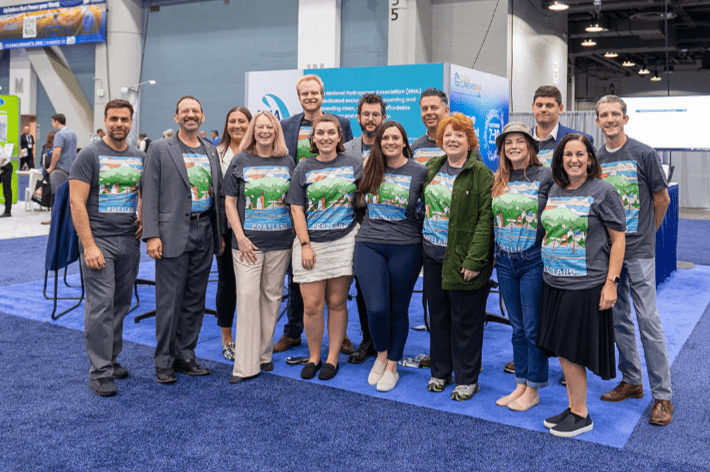
The NHA team at the end of Clean Currents 2023.
POLICY WRAP-UP
Three Bills Aiming to Protect and Advance Hydropower Move Ahead
This year was defined by a flurry of activity in the House and Senate related to hydropower legislation, as three bills – The Hydropower Clean Energy Future Act, The Community and Hydropower Improvement Act, The Maintaining and Enhancing Hydroelectricity and River Restoration Act – continue to advance.
Irrespective of content, the three bills are unique for their bipartisan support, especially during a period where it seems increasingly uncommon for Democrats and Republicans to find common ground.
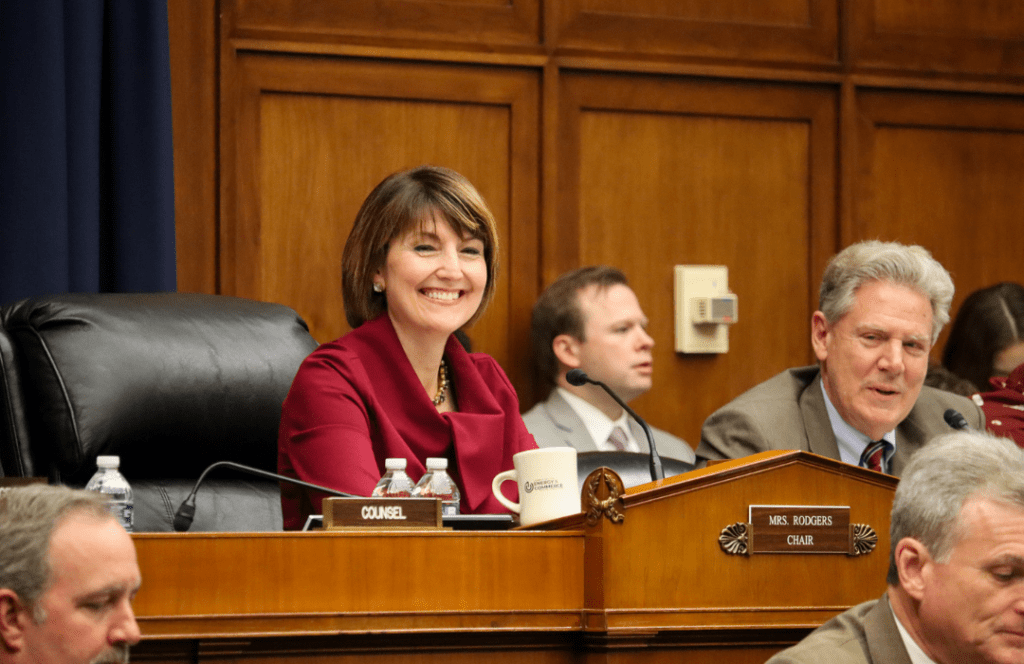
Representative Cathy McMorris Rodgers (R-WA) is the Chair of the House Energy and Commerce Committee.
The Hydropower Clean Energy Future Act, introduced by Representative Cathy McMorris Rodgers (R-WA), was passed out of the House Energy and Commerce Full Committee two weeks ago. The Senate’s Community and Hydropower Improvement Act, which received a legislative hearing, remains on the long list of bills to be included in a potential January markup.
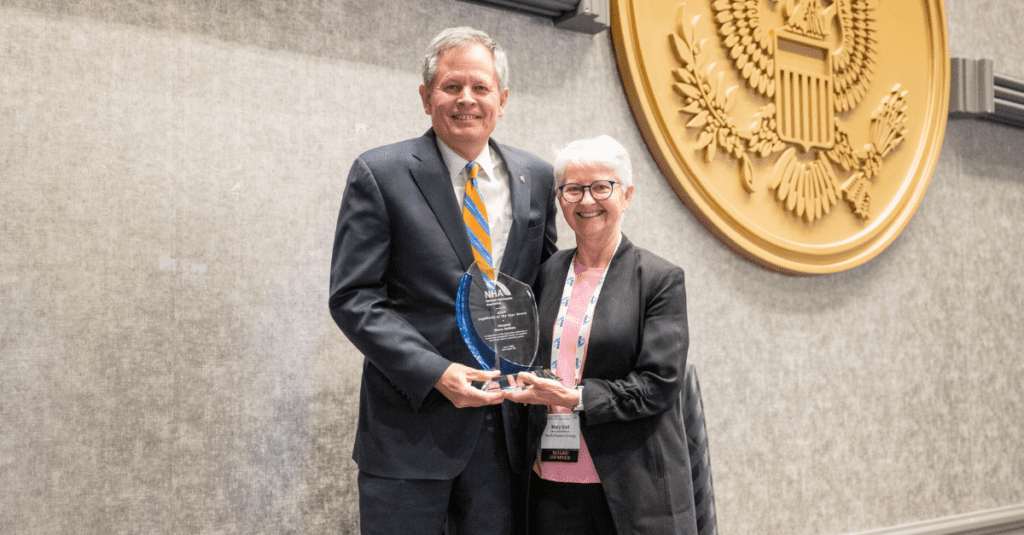
Senator Daines (R-MT) poses with NHA’s Legislator of the Year Award, accompanied by Mary Gail Sullivan, Director of Environmental & Lands Permitting and Compliance, NorthWestern Energy, at Waterpower Week 2023.
The Community and Hydropower Improvement Act was introduced by Senator Cantwell (D-WA) and Senator Daines (R-MT) on May 10, 2023, and is the product of negotiation among industry, conservation groups, and tribes under Stanford University’s Uncommon Dialogue coalition of which NHA is a major participant; the Uncommon Dialogue received $3.7 million dollars in funding from DOE in 2023 to help deepen critical conversations between hydropower and river stakeholders. The House and Senate bills are directionally similar, as both seek to expedite the licensing process for non-federal hydropower projects and coordinate federal decision making.
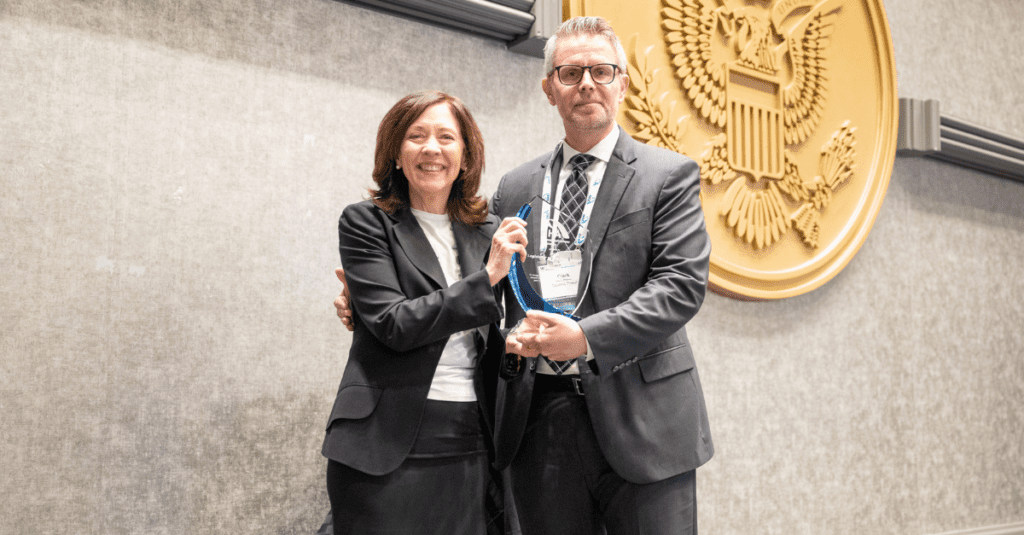
Senator Cantwell (WA-D) poses with Clark Mather, Community and Government Relations Manager, Tacoma Public Utilities, holding NHA’s Legislator of the Year Award at Waterpower Week 2023.
The Maintaining and Enhancing Hydroelectricity and River Restoration Act was introduced on December 7, 2023, by Reps. Adrian Smith (R-NE), Suzan DelBene (D-WA), Claudia Tenney (R-NY), Annie Kuster (D-NH), Brian Fitzpatrick (R-PA), and Kim Schrier (D-WA). Amongst the bill’s many benefits to hydropower, key among them would be a 30% Investment Tax Credit to U.S. hydroelectric investments to improve power production and provide environmental benefits.
California Becomes the First State to Pass Marine Energy Legislation
On October 7, 2023, California became the first U.S. state to pass marine energy-centric legislation in over 15 years with Governor Gavin Newson (D-CA) signing S.B. 605, the “Wave and Tidal Energy Bill,” into law, directing the California Energy Commission (CEC) to work with various state agencies and stakeholders to determine suitable locations for wave and tidal energy projects off the coast of California.
Additionally, the bill instructs the CEC to consider wave and tidal energy projects in its clean energy investment program, incentivizing and supporting technology demonstration projects.
The legislative success of California’s “Wave and Tidal Energy Bill” demonstrates the power advocacy has on state-level legislature’s role in water power industry investment, resulting in development and environmental benefits while also offering a roadmap to organizations interested in petitioning state governments for support.
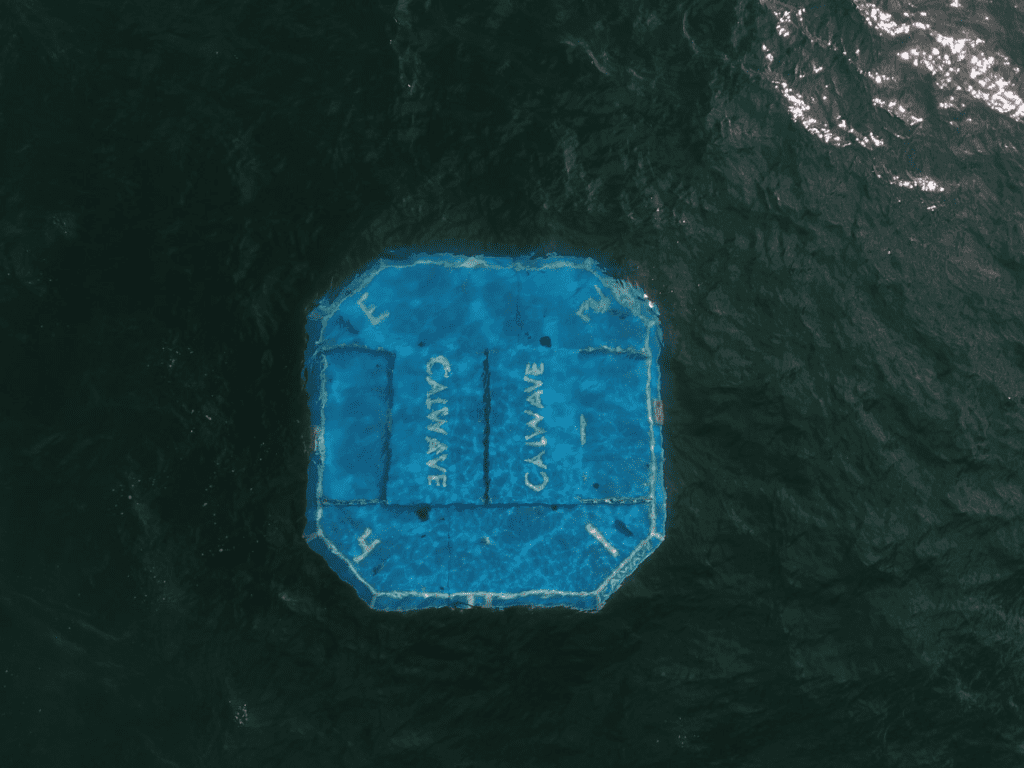
An overhead shot of CalWave’s xWave wave energy converter.
Pumped Storage Becomes Eligible for the Pumped Storage Investment Tax Credit
In November, the Internal Revenue Service (IRS) and the Department of the Treasury released proposed regulations related to investment tax credits (ITC) under Section 48 of the Code. Due to the hydropower industry’s advocacy, pumped storage hydropower now qualifies as “energy storage technology” and will receive an ITC to help the technology prosper and continue to serve as the greenest renewable energy technology, according to a study published by National Renewable Energy Lab researchers in August, 2023.
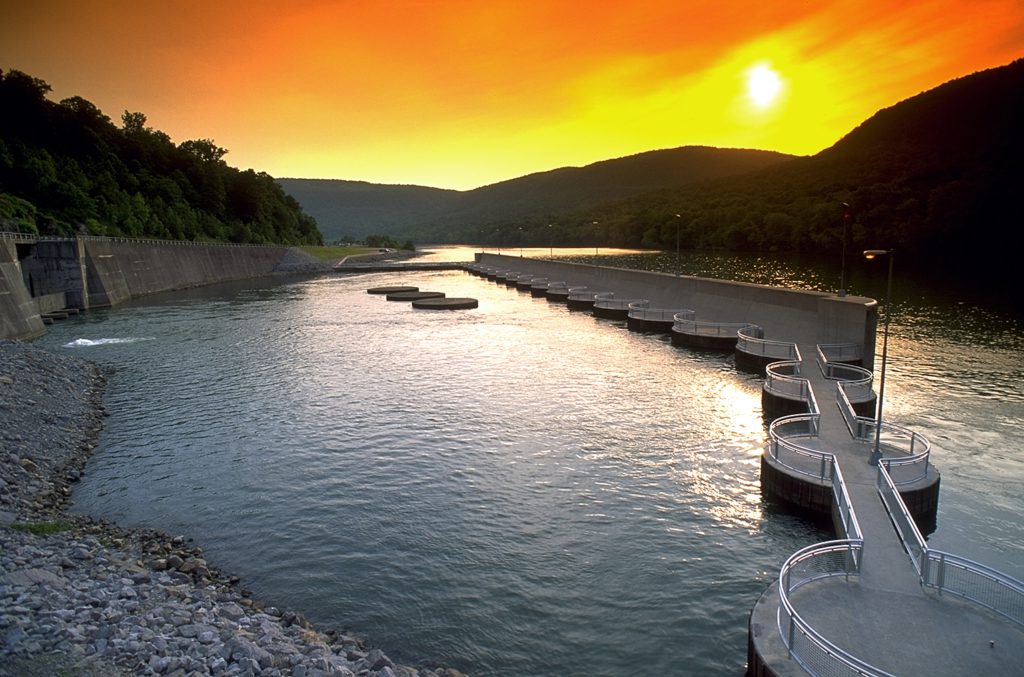
TVA’s Raccoon Mountain Pumped-Storage Plant.
NHA Defended the 401 Rule Up to the Supreme Court
Prior to the 2023 Final Rule on Section 401 of the Clean Water Act, NHA defended the 2020 Final Rule all the way up to the Supreme Court. The 2020 Final Rule incorporated a number of long-time industry priorities. The 2020 Final Rule was challenged throughout the 2021 and 2022 timeframes in the Ninth Circuit. NHA and other plaintiffs appealed lower court decisions to vacate the 2020 Final Rule all the way up to the Supreme Court. The Supreme Court stayed those lower court decisions pending appeal. Due to this, the 2020 Final Rule stayed in effect nearly two years after it was originally vacated by the U.S. District Court of Northern California.
After the 2023 Final Rule was published, and on Monday, December 4, 2023, NHA and thirteen other plaintiffs sued the Environmental Protection Agency (EPA) in the Fifth Circuit in response to the new Final Rule for Section 401 of the Clean Water Act. The Plaintiffs specifically requested preliminary injunction, arguing that the Final Rule violates the Administrative Procedures Act and Clean Water Act, as it’s retroactive in nature.
Due to the states lagging in the issuance of Section 401 Water Quality Certifications, the water power industry faced delays developing critical renewable projects and infrastructure work. Developers of new projects may be subjected to continued uncertainties, costs, and delays due to the states’ control over when FERC can issue a license. Licensees of existing projects seeking relicensing would also suffer from uncertainty as the FERC process is held up for years, often with no end in sight.
The NARUC Resolution Urges Integration of Conduit Hydropower into Water Management Facilities
At its July 2023 summer meeting in Austin, Texas, the National Association of Regulatory Utility Commissioners (NARUC) approved a resolution sponsored by Water Committee Co-Vice Chair and Pennsylvania Public Utility Commissioner Ralph V. Yanora. The Resolution, titled “WTR 1- Resolution Supporting the Integration of Hydropower as a part of Water/Wastewater/Stormwater Facilities Development, Expansion and Maintenance,” urges state and federal governments to support the integration of hydropower generating capacity into existing utility water management facilities.
While constructed for purposes unrelated to power generation, utility facilities have the potential to capitalize on the kinetic energy of moving water to help meet energy demand and grid resiliency. The NARUC Resolution urges state and federal cooperation to include and fund these reliable distributed generation resources as a part of the United States’ overall response to planned increases in energy demand and grid reliability.
The Resolution demonstrates that NARUC recognizes the role hydropower can play in meeting utility resiliency, environmental, and cost efficiency goals. Additionally, The Resolution can be used in conjunction with state-level advocacy efforts, demonstrating how conduit hydropower could serve the public interest as a normalized part of utility operations.
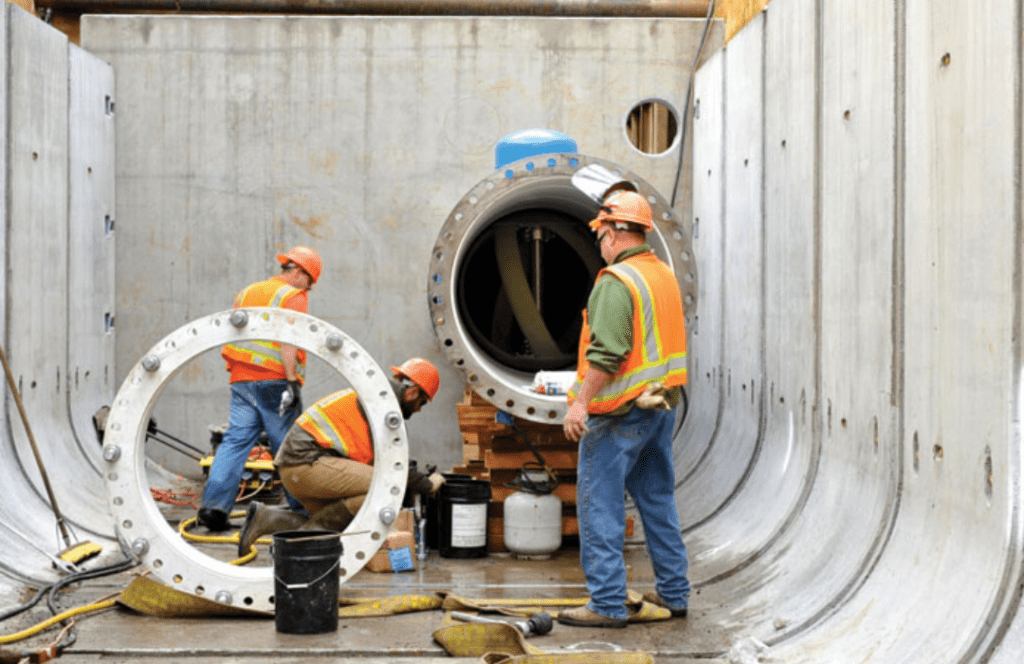
Workers in Portland, Oregon, install conduit hydropower systems in a municipal water pipeline.
NHA’s Advocacy Helped DOE Properly Implement the “240s” Programs
The Bipartisan Infrastructure Law (BIL) created massive funding opportunities for the hydropower industry in the Section 242, 243, and 247 programs. The Section 243 Program was a newly funded program while the Section 247 program was both newly created and newly funded. NHA, in concert with industry and other trade associations, successfully advocated the Department of Energy to create implementing guidance, allowing the hydro industry to take advantage of these hugely consequential funding opportunities.

